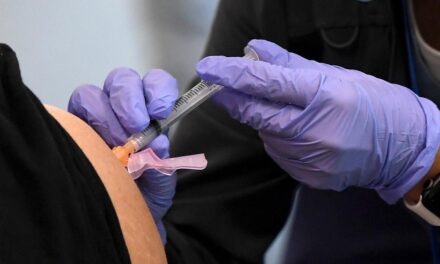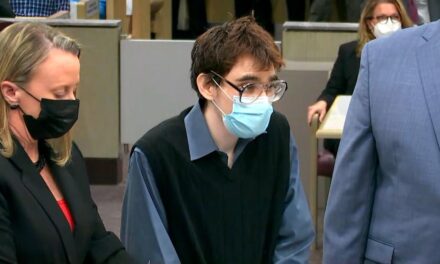
Analysis: A pandemic-scarred year ends in darkness — but with hope on the horizon

The year dawned in a blaze of hope that new, effective Covid-19 vaccines — free and available to all — would deliver the country from the worst public health emergency in 100 years, in which 350,000 Americans had already died. The promise of a new President, Joe Biden, to shut down the virus rang in the nation’s ears after his predecessor had lied about Covid-19’s severity, botched the government response and prized his political goals over its health.
But the year ends in a dark place. Hospitals are flooded with Covid-19 patients, the transportation network is seizing up, and a new coronavirus variant — Omicron — is finding even the most careful citizens.
This year was deadlier then the last. More than 820,000 have now perished in the United States alone from Covid-19. The US Centers for Disease Control and Prevention is predicting 44,000 deaths in the next four weeks. The once-unthinkable figure of a million lost Americans looks depressingly credible, and another White House has often seemed outmatched and hoping in vain for best-case scenarios to unfold as the virus stages fresh assaults.
“I think that right now we’re in the public health crisis of our lifetimes,” Dr. Jonathan Reiner, professor of medicine and surgery at George Washington University, told CNN on Thursday.
He spoke as hospitalizations are rising fast, across the country — including in New York, Michigan, Colorado and Maryland — and the Delta variant of the coronavirus clings on and causes vicious hotspots elsewhere.
Another expert, Michael Osterholm — whose analysis has been borne out by events in the pandemic — warned that potentially 10% to 20% of the US workforce could be infected at any one time, a figure that could trigger chaos in the health care, food, retail and travel sectors — not to mention when schools are back in session after the holidays next week.
“It will be a matter of weeks before we have an entire viral blizzard across this country,” Osterholm, director of the Center for Infectious Disease Research and Policy at the University of Minnesota, told CNN’s Laura Coates on Wednesday.
A new phase of the crisis
The frightening reality of the month to come suggests little reason for any national mood of celebration or new beginnings this New Year’s Eve.
Yet this latest phase of the pandemic, a global nightmare now heading into its third year, has been the most disorienting so far. But, paradoxically, Omicron’s surge of ubiquitous infection may contain within it seeds of hope.
While it is infecting many more people than earlier strains of the virus and so proportionally will send more to the hospital — a crisis that could buckle the medical system — Omicron seems to cause less serious and prolonged disease, according to a growing body of scientific evidence. For many Americans who are fully vaccinated and boosted, it is not as threatening as previous waves of virus — and may even manifest as a cold or cause no symptoms.
However, that doesn’t mean that the 90 million residents who either are not eligible or have chosen to spurn vaccines — many for political reasons — are not still at severe risk, since their chances of dodging infection are now many times worse with the new variant. Overwhelmingly, the dying are those who decided not to protect themselves.
But there is also now the promise not just of injections and boosters to ward off Covid-19 but of highly effective new therapies, including Pfizer’s first antiviral pill expected to be available in sufficient quantities within months to save lives. Biden’s promise of 500 million rapid Covid-19 tests available to any American who wants one could begin to fix a consistent failing of the across two administrations. Kids between the ages of 12 and 15 could get the green light to get their booster shots soon, taking another load off the minds of parents of older children.
There’s also reason to believe that the increased transmissibility of Omicron could mean that its wave could ebb as quickly as it built.
“It certainly peaked pretty quickly in South Africa. It went up almost vertically and turned around very quickly,” the government’s top infectious disease specialist, Dr. Anthony Fauci, said on CNBC on Thursday.
“I would imagine, given the size of our country, and the diversity of vaccination versus not vaccination, that it likely will be more than a couple of weeks, probably by the end of January, I would think,” he said.
The variant’s increased infectious properties are also changing the way the nation is fighting the pandemic — and could pave the way to a more sustainable response in which people learn to live alongside the virus. For instance, the CDC this week reduced isolation time from 10 days to five days for people with a positive Covid-19 test who don’t have symptoms or whose symptoms are resolving — as long as they mask up for a further five days.
The move was a recognition that society — and especially health care systems — could not function during the current wave with the older rules. The decision was also in line with behavioral science after officials weighed just how much more people were willing to tolerate, a sign that — whatever their leaders say — Americans are desperate and increasingly willing to take back their own lives.
There are undeniably positive signs of a country beginning to adapt to a new kind of life, where Covid-19, after the winter wave, may turn into sinister background music rather than a life-changing threat, at least in warmer months.
“Facts are important because facts can spread fear,” Eric Adams, the mayor-elect of New York City, told reporters on Thursday.
“Facts can also allow people to know that this is not at the place where we have morgues outside of hospitals, where we’re seeing people dying at alarming rates. We are not where we were in the beginning,” Adams said.
The fact that so many Americans who get infected will get only a mild case of the disease, a few sniffles or a sore throat for example, is beginning to trigger a debate about the extent to which society should simply move on. The situation is clearly far different than the beginning of the crisis, when vaccines were not available and social distancing, masking and lockdowns were the only defense.
The economy is also in far better shape this holiday season than last, though the Omicron wave will keep wary revelers out of restaurants and bars this holiday weekend and could take some of the heat out of the rebound. Goldman Sachs predicted the variant could knock US economic growth down to 3.8% next year, from an anticipated 4.2%.
Americans also have money to spend. According to Mastercard, retail sales were up 8.5% year-on-year this holiday, though the biggest economic cloud — rising inflation brought about by the shockwaves of the pandemic — is a real drag for many working people and could significantly dim the prospects of Democrats in November’s midterm elections.
There’s no healing America’s tortured politics
Biden’s own political problems deepened the longer the year went on, with the pandemic exacerbating his struggle to make the best of slim Democratic congressional majorities.
He’s not alone. The once-in-a-century challenges of a pandemic have left many world and local leaders — at least those in democracies — diminished. The sheer volume of unpopular, impossible decisions they must make is remarkable and fast erodes political capital they had hoped to spend on other things.
But Biden has also had his own missteps — like a partial declaration of victory over the virus on July Fourth, even at a moment when it was clear that the Delta variant that would cause a summer wave was lurking in the US. After promising for months to overhaul US testing capabilities, he now admits his administration was slow to crank up the production of rapid antigen tests ahead of the arrival of a far more infectious variant than previous viral strains.
Yet Biden has also been hampered by a relentless effort by Republicans to weaponize the pandemic for political gain. Ex-President Donald Trump may have belatedly decided to speak up for vaccines developed on his watch, but a relentless propaganda blitz by conservative media and right-wing populist politicians has contributed to low take-up levels and many deaths.
According to a CNN analysis in December, the risk of dying from Covid-19 is more than 50% higher in states that voted for Trump than Biden since vaccines became available. Some Republican governors, clearly eyeing potential presidential runs, like Florida’s Ron DeSantis, South Dakota’s Kristi Noem and Greg Abbott of Texas, made themselves figureheads for opposing masking and vaccine mandates in schools and the workplace.
They may argue that signs the rest of the country is beginning to live with Covid-19 made them pioneers. But their disdain for public health surely exerted a horrible price in terms of sickness and death. The Republican Party’s propensity to create fantasy worlds, as with its embrace of Trump’s election fraud lies, is also evident in its pandemic denial and tolerance for attacks on public health officials like Fauci.
“Real America is done with #COVID19. The only people who don’t understand that are Fauci and Biden,” Ohio Republican Rep. Jim Jordan tweeted earlier this month, days before hospitals started filling up again.
The national divides widened by Covid-19 have proved that nothing, not even a virus that infects without political favor, can mend the estrangement of a polarized nation.
More broadly, it may be hard to hope that life will be more normal — if anyone can remember what that feels like — on New Year’s Eve 2022. The fight against a virus that is always one step ahead is relentless and draining. The lack of vaccines in the developing world means it’s quite feasible another, more dangerous variant will develop and set back this year’s progress.
Yet while Covid-19 will almost certainly not be eradicated in a year’s time, medical advances and societal shifts mean that less draconian ways of dealing with it may be at hand. That’s something to hope for on New Year’s Eve.
Source: https://www.cnn.com/2021/12/31/politics/2021-pandemic-year-new-years-eve/index.html


















